#SuperTanker
Explore tagged Tumblr posts
Text

A Global Supertanker dropping water before landing at Pinal Airpark, Arizona
28 notes
·
View notes
Text

Namor by Dave Palumbo
21 notes
·
View notes
Text
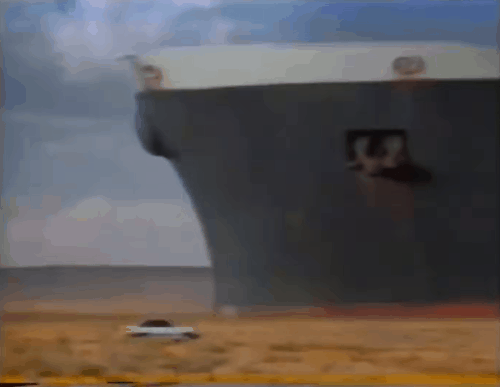
#animated gif#animated gifs#gif#gifs#old advertisements#old ads#retro#vhs#suez canal#supertanker#car#the car is faster#marginally#90s
14 notes
·
View notes
Text

the supertanker – 2024 BMW R 1300 GS Adventure.
9 notes
·
View notes
Text
The Power of Momentum in Internet Marketing: A Supertanker's Insight
The Power of Momentum in Internet Marketing: A Supertanker's Insight
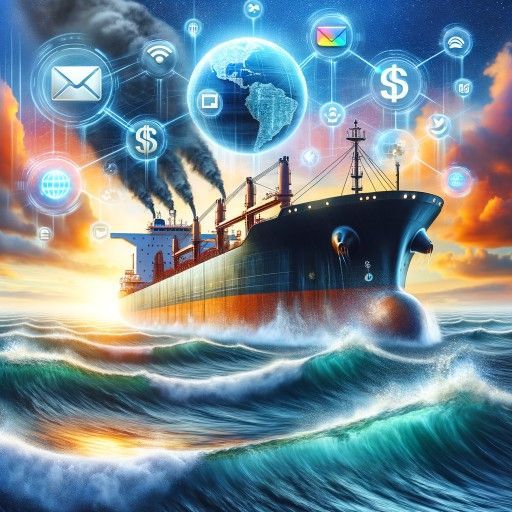
Imagine trying to stop a fully loaded supertanker at sea, cruising at a steady 16 knots, which translates to around 18 miles per hour. This massive steel behemoth, carrying its weight in cargo, takes approximately 20 minutes to come to a halt. That’s right—20 minutes. It’s enough time to make a sandwich, draft a to-do list, and maybe even ponder your life choices. But what does this maritime musing have to do with internet marketing? More than you might think.
Supertankers exemplify momentum in its most palpable form. Their sheer size and speed are a great metaphor for the slow build and eventual unstoppable force of a successful marketing campaign. When setting out on a marketing initiative—be it launching an email series, a social media blitz, or implementing a comprehensive blog strategy—the initial stages can often feel sluggish. Early efforts may seem futile, echoing in silence, with little to no immediate results.
This early phase demands persistence and patience as you lay the groundwork. Every email sent, each social media post published, and every blog article crafted contribute to the start-up process. At first, these efforts may resemble fruitless endeavors, but with consistency and time, momentum gradually builds. Like that lumbering supertanker, once set in motion, the force becomes significant and hard to interrupt. Your campaign transforms into a dominant presence, creating ripple effects across your audience.
However, momentum is a double-edged sword. Just as consistent effort can propel your marketing machine forward, neglect or inconsistency can slow it down. Halting your content flow, pausing ad campaigns, or fading away from audience engagement doesn't result in an instant stop. Instead, much like the slow deceleration of a supertanker, these actions initiate a drawn-out diminishing of momentum, demanding even more time and energy to regain that earlier force.
The key is steadfastness. Even when the landscape appears barren and void of engagement, maintain your course. Each piece of content produced adds to the underlying energy of your marketing engine, accumulating unseen power. Once the threshold is crossed, and true momentum is achieved, the impact is extraordinary and pervasive. The marketing force becomes a resilient entity, capable of cutting through challenges with ease.
Consider this principle as you develop and refine your marketing strategies. You're not just generating content or running campaigns—you're at the helm of a supertanker. Direct it with prudence and consistency. Trust the process and sow the seeds today for the formidable momentum to come.
Momentum is the unseen backbone of successful internet marketing. It requires dedication, perseverance, and above all, patience. Eventually, these efforts culminate in a marketing juggernaut that becomes difficult to derail. In steering this ship, embrace the journey and let motivation drive sustained progress and eventual triumph.
Visit my Blog for FREE RESOURCES
**
#InternetMarketing#Momentum#DigitalMarketing#Supertanker#MarketingStrategy#ContentCreation#MarketingTips#OnlineMarketing#MarketingInsights#AudienceEngagement
4 notes
·
View notes
Text


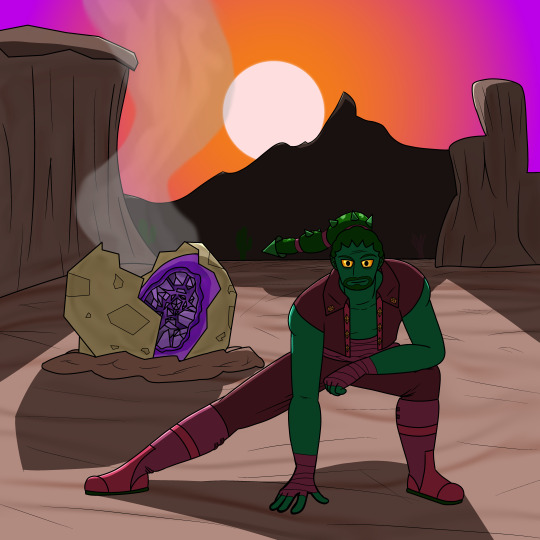




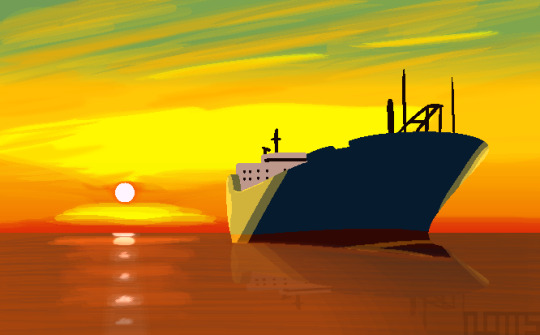

Here's a collection of environment pieces I've done throughout 2020 to 2022. They still have some of the roughness inherent to my earlier art, but I still like what I accomplished with them.
The first two were colored sketches, and both were products of me experimenting a bit with Firealpaca's tools. The first one I don't have too much to say about, aside from it being wonky and the clouds looking more like smoke. The second one has this almost dreamlike quality that I wish to recapture with my newfound knowledge someday.
The character in the third image is Floyd Maddox, another OC like Matrona who came from that old, scrapped story project. Unlike Matrona, I had the foresight to scrap Maddox earlier when I realized he wasn't going to work out.
While not one-to-one, the bridge and mountain pieces borrowed their palettes from PS1 Spyro levels--Spooky Swamp and Skelos Badlands, respectively. The latter piece holds up the best in my opinion, as it showcases a better understanding of atmospheric perspective, and I intend to reuse the method I used to set it up again in future pieces.
I'm not sure what direction I was going for with the alleyway piece; maybe I was going for that aforementioned dreamlike vibe in the second image. But the last image, depicting a supertanker at sunset, is probably the best of the bunch. Even though I wasn't trying too hard, I like how I accomplished this by making some brush strokes, duplicating the layers they were on, and playing around with the transparency of each copy. I tried this method again with the cloud piece--my last background like this for some time. I wonder how something these would look now that I've gotten over my fear of anti-aliasing.
We're starting to approach some of my most recent work now, and for that, I'll eventually start uploading pieces individually, as I have significantly more to say about my single pieces during late 2022 than I do about most that came before.
#notts' texts#art#supertanker#alleyway#mountains#old art#notts' art#clouds#oc art#spooky#woods#dead tree#cityscape#oil rig#night#sunset
#my art#art#supertanker#alleyway#mountains#clouds#oc art#spooky#woods#dead tree#cityscape#oil rig#night#sunset
6 notes
·
View notes
Text
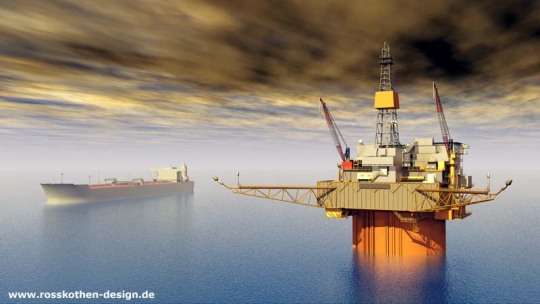
Oil platform and supertanker
#oil platform#drilling rig#offshore construction#oil rig#offshore platform#oil#natural gas#oil drilling#gasoline#petroleum#oil industry#industrial#fuel#mineral oil#oil source#oil well#crude oil industry#oil crisis#sea#ocean#illustration#3d#supertanker#oil tanker#tanker#industrial ship#ship#dark clouds
0 notes
Text
Diduga Lakukan Aktivitas Ilegal di ZEEI, Kapal Super Tanker Bendera Iran Ditangkap
Diduga Lakukan Aktivitas Ilegal di ZEEI, Kapal Super Tanker Bendera Iran Ditangkap #BakamlaRI #Penangkapan #KapalAsing #SuperTanker #BenderaIran
Hargo.co.id, JAKARTA – Kapal super tanker diduga milik Iran tertangkap oleh Bakamla, di Laut Natuna Utara pada Jumat (7/7/2023). Penangkapan tersebut karena kuat dugaan Kapal Super Tanker melakukan aktivitas ilegal di Zona Ekonomi Eksklusif Indonesia (ZEEI). Proses penangkapan berlangsung dramatis, karena kapal tersebut berupaya kabur. Namun, berkat kesigapan Bakamla, Kapal Super Tanker itu…

View On WordPress
0 notes
Text
#319. Sharpedo

Nicknamed "the bully of the sea," Sharpedo is widely feared. Its cruel fangs grow back immediately if they snap off. Just one of these Pokémon can thoroughly tear apart a supertanker.
Colour and symbol charts can be found here.

A note on colours: in my experience, floss looks different irl than in online pattern makers. If you think a different colour will work better, go with your gut!
14 notes
·
View notes
Text
On March 2, she was gone. The Belize-flagged, British-owned bulk carrier Rubymar sank in the narrow water lane between the coasts of Yemen and Eritrea. The Rubymar was the first vessel that has been completely lost since the Houthis began their attacks on shipping in the Red Sea—and its demise, with 21,000 metric tons of ammonium phosphate sulfate fertilizer, spells ecological disaster. A similar substance—ammonium nitrate—caused the devastating explosion at the Port of Beirut in 2020. It had been stored there after being abandoned on a vessel and authorities intervened to prevent an environmental disaster.
Because the Houthis have no regard for the environment, there are likely to be more such disasters. Indeed, groups set on destruction could also decide to attack the carbon storage facilities now beginning to be built underneath the seabed.
For two weeks after being struck by a Houthi missile in the Red Sea, the Rubymar clung to life despite listing badly. The damage caused by the missile, though, was too severe. At 2:15 a.m. local time, the Rubymar disappeared into the depths of the Red Sea. The crew had already been rescued by another merchant vessel that had come to the Rubymar’s aid, but there was no way anyone could remove its toxic cargo.
The ship’s owner had tried to get it towed to the Port of Aden—where Yemen’s internationally recognized government is based—and to Djibouti and Saudi Arabia, but citing the environmental risk posed by the ammonium phosphate sulfate, all three nations refused to receive it.
Now enormous quantities of a hazardous substance are about to spread into the Red Sea. IGAD, a trade bloc comprising countries in the Nile Valley and the Horn of Africa, points out that the Rubymar’s fertilizer cargo and leaking fuel “could devastate marine life and destroy coral reefs, sea life and jeopardize hundreds of thousands of jobs in the fishing industry as well as cut littoral states off from supplies of food and fuel.”
Not even shipping’s option of last resort, salvage companies, seems available. “The salvage companies that normally recover vessels are reluctant to go in,” said Cormac Mc Garry, a maritime expert with intelligence firm Control Risks. That’s because salvage ships and crews, too, risk being targeted by Houthi missiles. “If a salvage company knows it’s likely to be targeted, it will hesitate to take on the task. It has a duty of care for its crew,” said Svein Ringbakken, the managing director of the Norway-based maritime insurance company DNK.
It was only a matter of time before a Houthi missile brought down one of the many tankers and bulk carriers that still traverse the Red Sea every day. (In the first two months of this year, traffic through the Red Sea was down by 50 percent compared to the same period last year.) “The Houthis have no regard for life and even less for the environment,” Ringbakken said. “They shoot missiles at ships even though they know that there are humans and hazardous cargo on them.”
For years, the Houthis allowed an oil supertanker ironically named Safer that was moored off the coast of Yemen to rust away even though she was holding more than 1 million barrels of crude oil. By the beginning of last year, the Safer was close to disintegration: an event that would have cost hundreds of thousands of Yemenis their livelihoods because it would have killed enormous quantities of fish. Indeed, had the Safer’s oil leaked, it would even have forced the Houthi-controlled ports of Hudaydah and Saleef to close, thus preventing ordinary Yemenis from receiving food and other necessities.
It would, of course, also have caused permanent damage to all manner of marine life, including coral reefs and mangroves, in the Red Sea. Then the United Nations pulled off an almost impossible feat: It got Yemen’s warring factions, international agencies, and companies to work together to transfer the oil off the Safer. Disaster was averted. “It was a massive undertaking,” Ringbakken noted. “But for years and years and years, the Houthis were adding impediments against this undertaking, even though the Safer was sitting just off the Yemeni coast.”
Indeed, maritime terrorism itself is not new. “Besides guerrillas and terrorists, attacks have been carried out by modern day pirates, ordinary criminals, fanatic environmentalists, mutinous crews, hostile workers, and foreign agents. The spectrum of actions is equally broad: ships hijacked, destroyed by mines and bombs, attacks with bazookas, sunk under mysterious circumstances; cargos removed; crews taken hostage; extortion plots against ocean liners and offshore platforms; raids on port facilities; attempts to board oil rigs; sabotage at shipyards and terminal facilities; even a plot to steal a nuclear submarine,” researchers at RAND summarized—in 1983.
Now, though, the Houthis have upped the nihilism, and unlike the guerrillas, terrorists, and pirates of the 1980s, they have the weaponry to cause an ocean-going vessel to sink. The joint U.S.-U.K. military operation against the Houthis has failed to deter the Iranian-backed militia’s attacks; indeed, not even air strikes by U.S. and U.K. forces have convinced the Houthis that it’s time to stop. On the contrary, they’re escalating their attacks. They do so because they’re completely unconcerned about loss of life within their ranks or harm to their own waters.
It’s giving them a global platform. That, in turn, is likely to encourage other militias to also attack ships carrying toxic substances—even if it ruins their own waters. The local population is hardly in a position to hold a militia accountable. Indeed, militias interested in maritime terrorism could decide that the world’s growing sea-based infrastructure is an attractive target. And there’s a new form of sea-based infrastructure they could decide to make a preferred target, not just because it’s set for explosive growth but because attacking it would guarantee a global platform: CO2 storage.
With the world having failed to reduce its carbon-dioxide emissions enough to halt climate change, CO2 storage has become an urgent priority. Through this technique, carbon dioxide can be captured and buried underground, typically underneath the ocean. Norway has, for example, begun auctioning out licenses for CO2 storage exploration on its continental shelf. So has Britain. The United States has 15 carbon-storage sites, and another 121 are being developed. Even Big Oil has discovered carbon storage. ExxonMobil is buying offshore blocks to use for carbon storage instead of oil drilling.
Carbon storage sites are, of course, designed to withstand both natural perils and man-made attacks, but that won’t prevent destructive groups—especially ones backed by a powerful state—from trying. And because groups like the Houthis are so unconcerned about all forms of life, it won’t matter to them that releasing concentrated CO2 would cause extreme harm to the planet—including themselves. Even a tiny carbon-storage leakage of 0.1 percent per year can lead to additional CO2 emissions of 25 giga-tonnes, researchers have established.
Until recently, sea-based infrastructure was only lightly guarded, because it was in everyone’s interest that it worked. The sabotage of Nord Stream and various other pipelines and undersea cables over the past two years have demonstrated that such peacefulness can no longer be taken for granted. The new CO2 sites will need not just AI-enhanced monitoring but regular patrolling to communicate to potential attackers that it’s not even worth attempting an attack.
And for now, attacking merchant vessels remains a promising and economical strategy for the Houthis and their ilk. It doesn’t seem to matter that ammonium phosphate sulfate will soon be poisoning Yemeni waters and thus depriving locals of their livelihoods. Indeed, other bulk carriers and tankers may soon join the Rubymar on the bottom of the sea, poisoning the future for even more Yemenis.
For the Houthis, what matters is not the outcome: It’s the attention. That’s what makes them such a vexing problem for the U.S. Navy and other navies, shipowners, maritime insurers, and especially for seafarers. But there is another group that should be just as worried about the rampant insecurity on the high seas: ocean conservationists.
There is, in fact, a woman with an unsurpassed green platform who could make the growing scourge of maritime terrorism her new cause. (Nearly) everyone would thank you, Greta.
34 notes
·
View notes
Note
They're doing something about this problematic ship
https://gcaptain.com/smit-team-set-to-begin-oil-transfer-from-decaying-fso-safer/
Today's Problematic Ship that has been Listening and Learning is the FSO Safer
The FSO Safer, which we have previously written about, is a very large crude carrier converted to floating oil storage. It was moored off the coast of Yemen and held more than one million barrels of crude oil when the war in Yemen broke out.
Already old (built in 1976) and in poor condition, the FSO Safer could not be properly maintained or offloaded due to the war. Particularly worrying was the ship's inert gas system, which displaces air in its oil tanks with inert gas. This prevents built-up oil vapours from exploding, e.g., because of electrical sparks. An onboard explosion or simply the rusting into pieces of the FSO Safer could have spilled one million barrels of crude oil into the Red Sea. An oil spill would threaten not only local ecosystems, but fishing water, desalination plants, and ports supporting millions of people with food and fuel imports. (Throughout the war, Yemen has already been one of the world's most food insecure countries.)
As of August 2023 the FSO Safer has been emptied, with its oil transferred to a replacement vessel, the Yemen, in a UN-led operation. The FSO Safer will be scrapped. The Yemen will be moored in place, effectively taking the FSO Safer's place. The reason for this is the disputed ownership of the oil by the warring parties, meaning the oil cannot be sold directly. The UN has offered to mediate negotiations to arrange a sale.
101 notes
·
View notes
Text
2.8 billion chickpeas were ruined when hummus supertanker Exxon Mustafa crashed into the stony shores of the Aigosthina Bay, resulting in the second greatest garbanzo-based environmental disaster in history; this incident is second only to the Gümüşhane falafel plant meltdown of 1987 that left the immediate area uninhabitable for two decades.
Despite efforts to clean and rehabilitate the hummus-soaked wildlife, many seabirds and marine mammals died shortly after being reintroduced to the Gulf of Corinth.
117 notes
·
View notes
Text










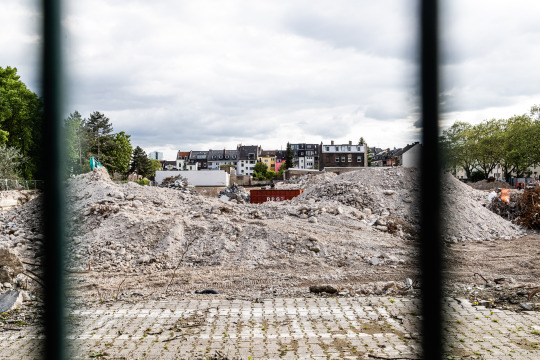


franz-geuer-straße // köln ehrenfeld
completion: 1973
demolition: 2023
last year it was unfortunately demolished the old siemens branch in cologne-ehrenfeld. sometimes referred to as the supertanker, it dominated the street views in this corner of the veedel. it's a pity that it had to go and that, as so often, no creative and meaningful use was found for the building.
im letzten jahr wurde sie leider abgerissen die alte siemensniederlassung in köln-ehrenfeld. manchmal auch als supertanker bezeichnet dominierte sie in dieser ecke des veedels die straßen an- und aussichten. schade das sie weichen musste und man wie so oft keinen kreativ-sinnvollen umgang mit dem gebäude fand und wieder viel energie beim abriß verloren wurde.
#cologene#köln#ehrenfeld#köln ehrenfeld#architecture#photography#architecture photography#nrw#germany#rhineland#siemens#nachkriegsmoderne#design#urban#post war architecture#nachkriegsarchitektur#post war modern#nachkriegsarchitektur nrw#nachkriegsarchitektur köln#nachkriegsarchitektur deutschland#nachkriegmoderne rheinland#nachkriegsmoderne köln#nachkriegsmoderne deutschland#german post war modern#rhineland post war modern#cologne post war modern#cologne post war architecture
48 notes
·
View notes
Note

why did people beleive this was real?
I have no idea, aside from the Russian history of building goofy shit. The original was made as a joke by a scale modeler in the 90s and people with less braincells than I've had sexual encounters took it and ran with it as some Soviet Supertank. The closest they ever got to something like this was the T-35.
20 notes
·
View notes
Text

The biggest ship ever built is the Seawise Giant, also known as the Knock Nevis, Happy Giant, Jahre Viking, or Mont. It was a supertanker that was built in 1979 and scrapped in 2010. It had a length of 1,504 feet (458 meters), a beam of 226 feet (69 meters), a draft of 81 feet (25 meters), and a displacement of 657,019 tons (595,214 metric tons). The Seawise Giant was so big that it could not pass through the Suez Canal or the Panama Canal. It could only sail in the Indian Ocean, the Persian Gulf, and the South China Sea. It could carry up to 4.1 million barrels (650,000 cubic meters) of crude oil, which is equivalent to about 5% of the daily global oil consumption.
3 notes
·
View notes
